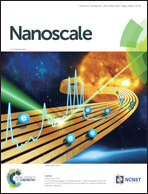Redox-active nanomaterials for nanomedicine applications
Abstract
Nanomedicine utilizes the remarkable properties of nanomaterials for the diagnosis, treatment, and prevention of disease. Many of these nanomaterials have been shown to have robust antioxidative properties, potentially functioning as strong scavengers of reactive oxygen species. Conversely, several nanomaterials have also been shown to promote the generation of reactive oxygen species, which may precipitate the onset of oxidative stress, a state that is thought to contribute to the development of a variety of adverse conditions. As such, the impacts of nanomaterials on biological entities are often associated with and influenced by their specific redox properties. In this review, we overview several classes of nanomaterials that have been or projected to be used across a wide range of biomedical applications, with discussion focusing on their unique redox properties. Nanomaterials examined include iron, cerium, and titanium metal oxide nanoparticles, gold, silver, and selenium nanoparticles, and various nanoscale carbon allotropes such as graphene, carbon nanotubes, fullerenes, and their derivatives/variations. Principal topics of discussion include the chemical mechanisms by which the nanomaterials directly interact with biological entities and the biological cascades that are thus indirectly impacted. Selected case studies highlighting the redox properties of nanomaterials and how they affect biological responses are used to exemplify the biologically-relevant redox mechanisms for each of the described nanomaterials.

- This article is part of the themed collection: Recent Review Articles


 Please wait while we load your content...
Please wait while we load your content...